Following the war, Standard resumed production of the Eight and Twelve models, and acquired the Triumph Motor Company. The car for which the company is best known in Australia, the Vanguard, was the result of a “one model policy” adopted in 1948. Standard’s global production facilities would not only include Australia, but Canada, India and South Africa. Standard was taken over by Leyland Motors in 1960, the last UK Standard being manufactured in 1963.
The Vanguard still had a separate chassis the mechanical specification thoroughly modern and included all-synchromesh gears, front coil suspension and hydraulic brakes. Beneath the Vanguards bonnet sat an all new four cylinder engine of 2088cc complete with overhead valves. Standard launched a revised Vanguard "Phase II" in 1952 to replace its original design. The new Phase III Vanguard of 1955 finally broke away from the old "separate" chassis engineering layout of the two previous Vanguard models. The new chassis arrangement also allowed the engine to sit further forward in the body, thus allowing improved interior space.
In Australia, many of the early Standard and Triumph vehicles were fitted with locally built bodies. Some of the more well known body builders of the time, including Holden, TJ Richards, Floods and Ruskins were contracted to build bodies by the various company agents in each state. With so many different body builders involved in car assembly there were many variations!
After 1945, production was gradually concentrated in Victoria at the Standard Motor Company (Australia) assembly plant of Port Melbourne. In 1958, Standard Motor Products, the holding company which controlled the assembly and marketing of Standard and Triumph vehicles in Australia, changed its name to become Australian Motor Industries (AMI). Under an agreement made between SMC and Standard Motor Products in 1952, AMI continued to assemble Triumph cars until mid 1976. Leyland Australia then took control of the assembly and distribution of Triumph cars and the last 2500 models were released in 1978.
Post war production was based on CKD packs which were imported from England. Australian made components were used to comply with local content rules and as a result many Standard-Triumph vehicles were produced with features which are uniquely Australian.
This body style was called a pickup truck in the UK and this version had modest sales there, but the main purchaser was the RAF, who had them in Phase I and II form.
In 1950, the Australian subsidiary of the Standard Motor Company introduced a Coupé utility version of the Vanguard Phase I. It was fitted with the same 2088 cc four cylinder engine as used in the saloon. Utility versions of the Vanguard were produced in Australia over the following years with production ending in 1964.
| 1948 Standard Vanguard (Phase I) |
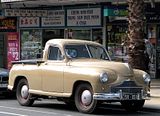 |
| 1952 Standard Vanguard |
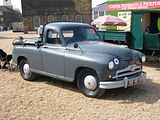
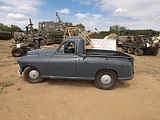
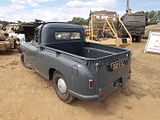
|
| 1959 |
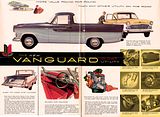 |
| 1963 Standard Vangard (Phase III) |
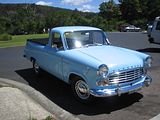 |
|
|






